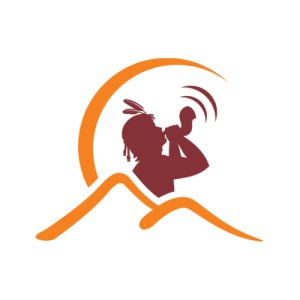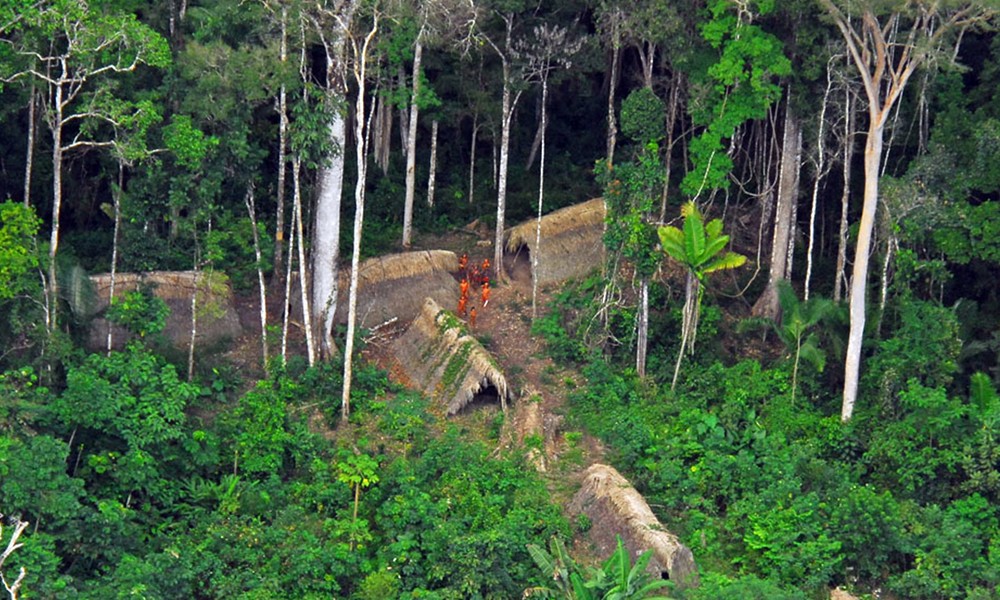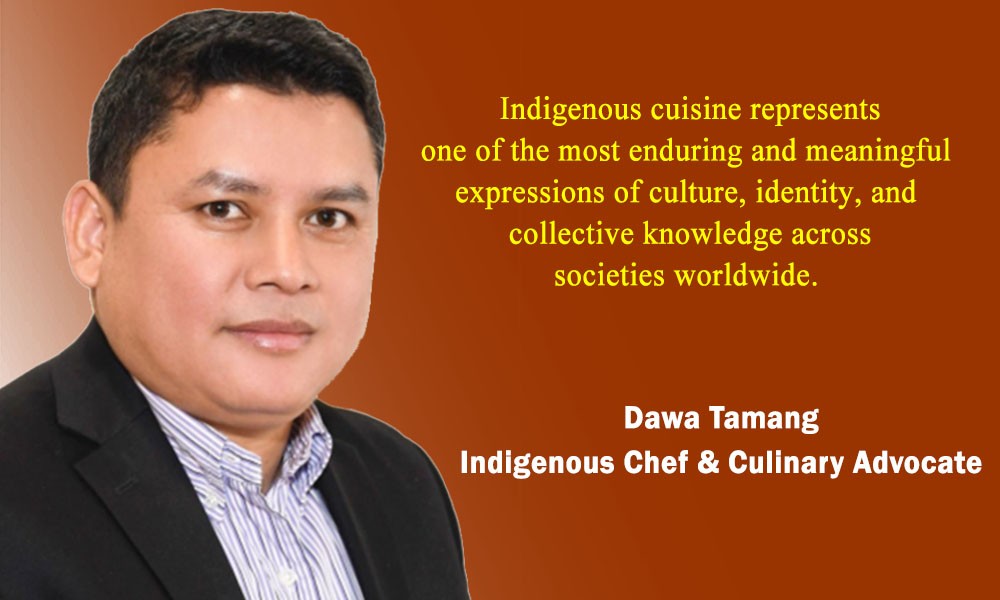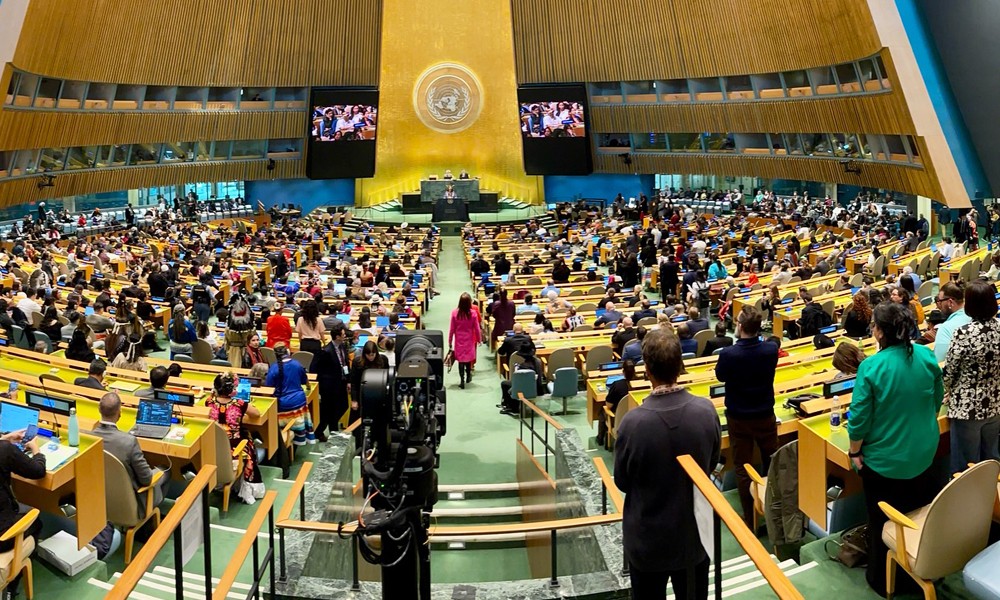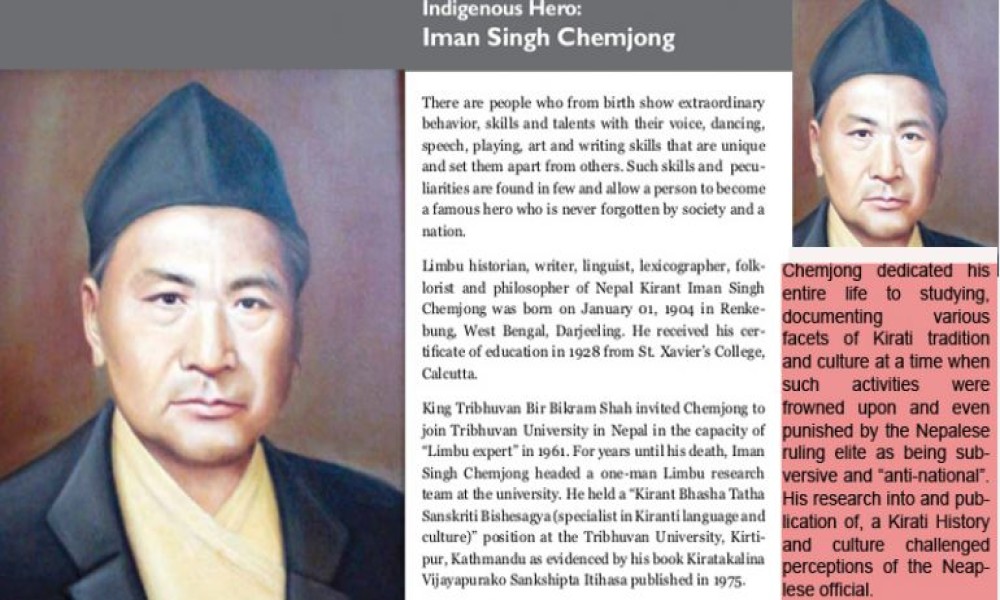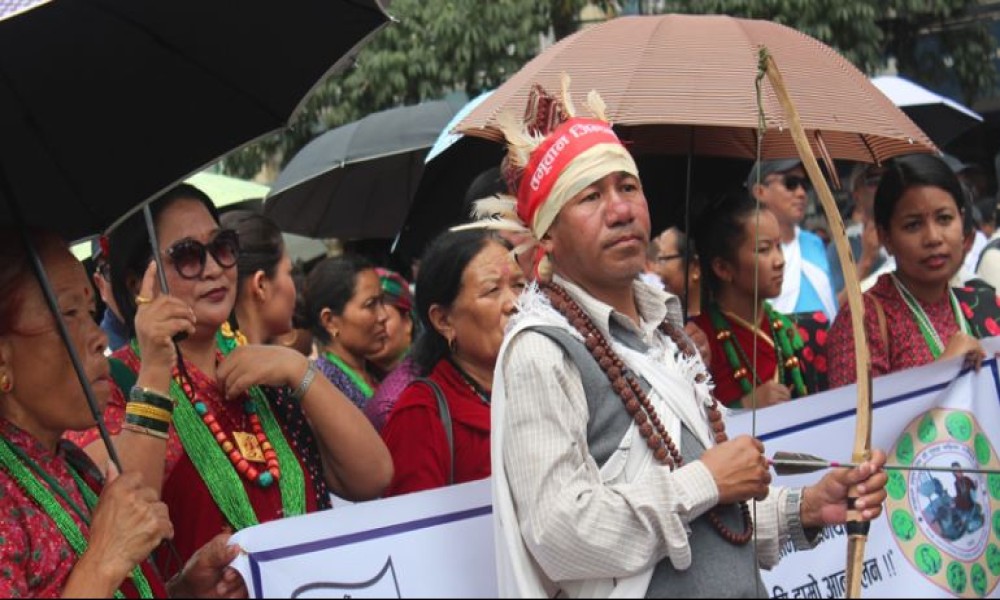By Aimee Gabay
At the United Nations Permanent Forum on Indigenous Issues — the world’s largest convening of Indigenous peoples — Indigenous leaders from South America are taking the chance to spotlight threats facing isolated peoples (also known as uncontacted people).
Deforestation is closing in on some communities in the Amazon and many lack official recognition of records of their existence, say representatives at the 10-day gathering in the U.N. headquarters in New York City. They are holding multiple events in the city, including launching a book with strategies to recognize their presence and sharing solutions to protect the lands they depend on.
“There needs to be greater respect, protection and land demarcation for these peoples,” said Bushe Matis, general coordinator of the Union of Indigenous Peoples of the Vale do Javari (UNIVAJA). “It’s important for us Indigenous peoples who came to New York to raise our voices for them.”
The rights of isolated Indigenous peoples are guaranteed in international legislation and some national laws, such as the U.N. Declaration on the Rights of Indigenous Peoples (UNDRIP) and Convention 169 of the International Labor Organization (ILO Convention 169). However, these are at times violated by states, companies, and invaders searching for land. In some cases, they are unprotected because states, including Venezuela and Paraguay, don’t recognize them.
Indigenous delegates at the 24th session of the United Nations Permanent Forum on Indigenous Issues called attention to the threats faced by Indigenous peoples in voluntary isolation and initial contact, or PIACI.
Indigenous peoples in voluntary isolation and initial contact, also known as PIACI, are threatened by the exploitation of natural resources, drug trafficking, illegal logging, and mining in their lands, say researchers. Contact with outsiders can be deadly because isolated peoples lack immunity to illnesses that are common outside. These threats can also lead to their displacement and the disappearance of the game they depend on to survive.
“The issue is of utmost importance because these peoples are the ones who also help protect Indigenous territories with their ancestral knowledge,” said Eligio Dacosta, the president of the Regional Organization of Indigenous Peoples of Amazonas (ORPIA) in Venezuela. “These peoples have a higher level of spirituality than other Indigenous peoples normally have.”
The main proposals Indigenous leaders and organizations have raised at the forum are the recognition of lands vital for isolated peoples and the implementation of protective measures, such as public policies to safeguard their rights.
Lack of protection
Jamer López, the president of ORAU, a regional organization part of the Interethnic Association for the Development of the Peruvian Rainforest (AIDESEP), said the primary concern of Indigenous leaders and organizations at the forum is to secure the territories their isolated brothers and sisters have ancestrally occupied.
While there has been past progress in Peru, he said the state, rather than guarantee the protection of these communities, has promoted policies of land possession, such as laws that obstruct and prevent the creation of Indigenous reserves for isolated peoples. The government is favoring the interests of big business which want to expand forestry concessions and oil fields in these areas to boost economic growth, López said.
For more than 20 years, Indigenous organizations in Peru have petitioned the government to create Yavarí Mirim, a one million-hectare (2.5 million-acre) Indigenous reserve on the Amazon border with Brazil and Colombia that would protect hundreds of isolated and initially contacted peoples in the region. But in February this year, the country’s Multi-Sector Commission postponed a meeting to determine the reserve boundaries indefinitely.
Isolated peoples are affected by the exploitation of natural resources in their territories, drug trafficking, logging, and other illegal economies.
Peru’s Ministry for Culture did not respond to our requests for comment by the time of publication.
Darío Silva Cubeo, a delegate of the Amazon Regional Roundtable for the Amazonas department of Colombia, told Mongabay a “very serious concern” in Colombia is that despite having a decree to protect isolated peoples (Decree 1232), to date, there has been little implementation and there is no public policy on the matter, such as a contingency plan in case of contact.
In Colombia and many other countries in South America, many people in isolation are threatened by organized groups, such as illegal miners and drug traffickers, who encroach on their homes and cause violence and displacement. “They are being besieged precisely by the chains of crime,” Lena Estrada Añokazi, Colombia’s minister of environment and sustainable development, and the first Indigenous person to ever hold the position, said at the forum.
“That’s why it’s urgent to continue to invest more in investigations to find out who these criminals are.”
Proposals
Across South America, states only recognize and guarantee the rights of peoples in isolation whose presence has been officially recorded. In Venezuela, for example, although NGOs have confirmed four records of Indigenous peoples in voluntary isolation, the state has not recognized any of them.
“[Venezuela] does not appear on the map of isolated peoples in Latin America,” said Dacosta. “There are already mining hotspots in each [Indigenous territory] and mining is almost reaching these peoples who do not have this initial contact, who are in isolation.”
Indigenous peoples and organizations at the forum urged states to adopt a territorial corridors initiative and to implement policies, standards and cross-border mechanisms to secure their territories and rights.
Dacosta said people in isolation have already been affected in some regions as mining gradually pushes their displacement. At the forum, ORPIA raised the issue with the national government and called for constitutional reform in Venezuela to establish rights for peoples in isolation and initial contact. Currently, they are not included in its constitution, and the country has no established protocols to recognize them in laws and supreme decrees.
Venezuela’s Ministry for Indigenous Peoples did not respond to our requests for comment by the time of publication.
The International Working Group for the Protection of Indigenous Peoples in Isolation and Initial Contact (GTI-PIACI) launched a report at the forum that lays out a series of principles and guidelines to help governments, Indigenous organizations, and NGOs prove the existence of Indigenous peoples in isolation.
According to the report, there are 188 records of Indigenous peoples in voluntary isolation in South America but only 60 are officially recognized by the state. “This means that, for the state, 128 records don’t exist,” states the report, adding that this lack of recognition denies the rights of these communities. Of these records, Indigenous organizations recognize 31, but they are not included in the official lists.
There are 188 records of isolated Indigenous peoples in South America, however national governments officially recognize 60.
Delegates have also requested that states adopt a territorial corridors initiative, which aims to protect the PIACI and the well-being of neighbouring Indigenous peoples. They have called on governments to coordinate with the Indigenous organizations to implement policy actions, with a cross-border approach, to guarantee isolated peoples’ rights and territories.
Last month, Colombia created an over 1-million-hectare (2.7-million-acre) territory to protect the Yuri-Passé Indigenous peoples living in isolation between the Caquetá and Putumayo Rivers in the Amazon.
“In order to protect them, we must protect the territories they inhabit,” Estrada said. “We must also protect the Indigenous peoples surrounding the territories they inhabit. If we strengthen the governance of these Indigenous peoples whose territories surround the territories of isolated peoples, we will obviously protect them as well.”
Julio Cusurichi, a Shipibo-Conibo Indigenous leader and President of the Native Federation of the River Madre de Dios and Tributaries (FENAMAD) in Peru, wrote over WhatsApp voice messages they want to see the implementation of a control and surveillance system in Peru to protect the PIACI which involves the participation of the communities surrounding these reserves.
Aimee Gabay is associated with Mongabay. This story is published through the Indigenous News Alliance.


